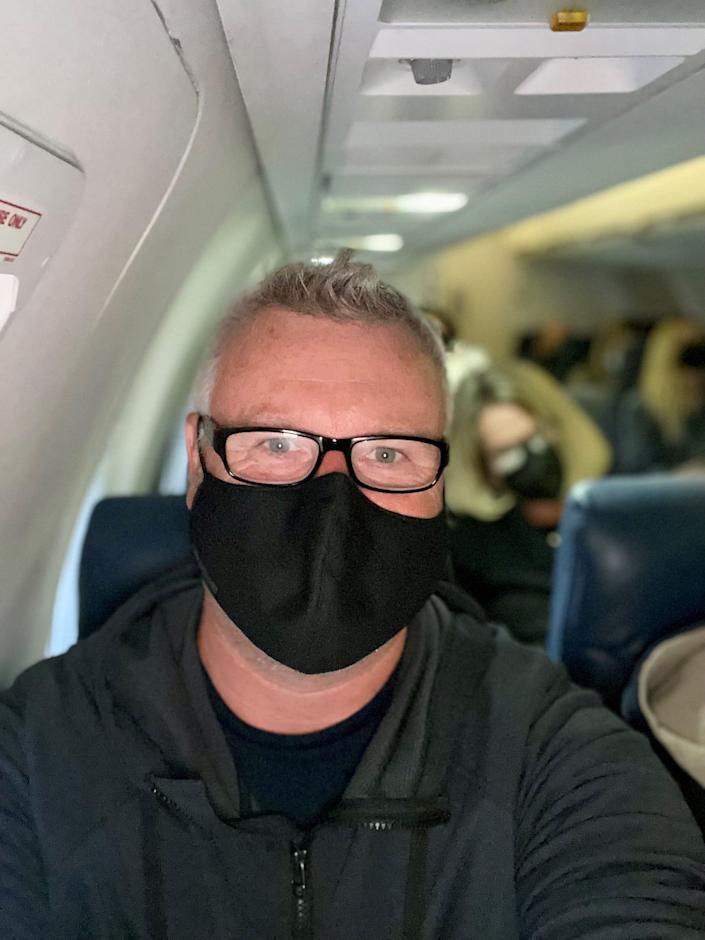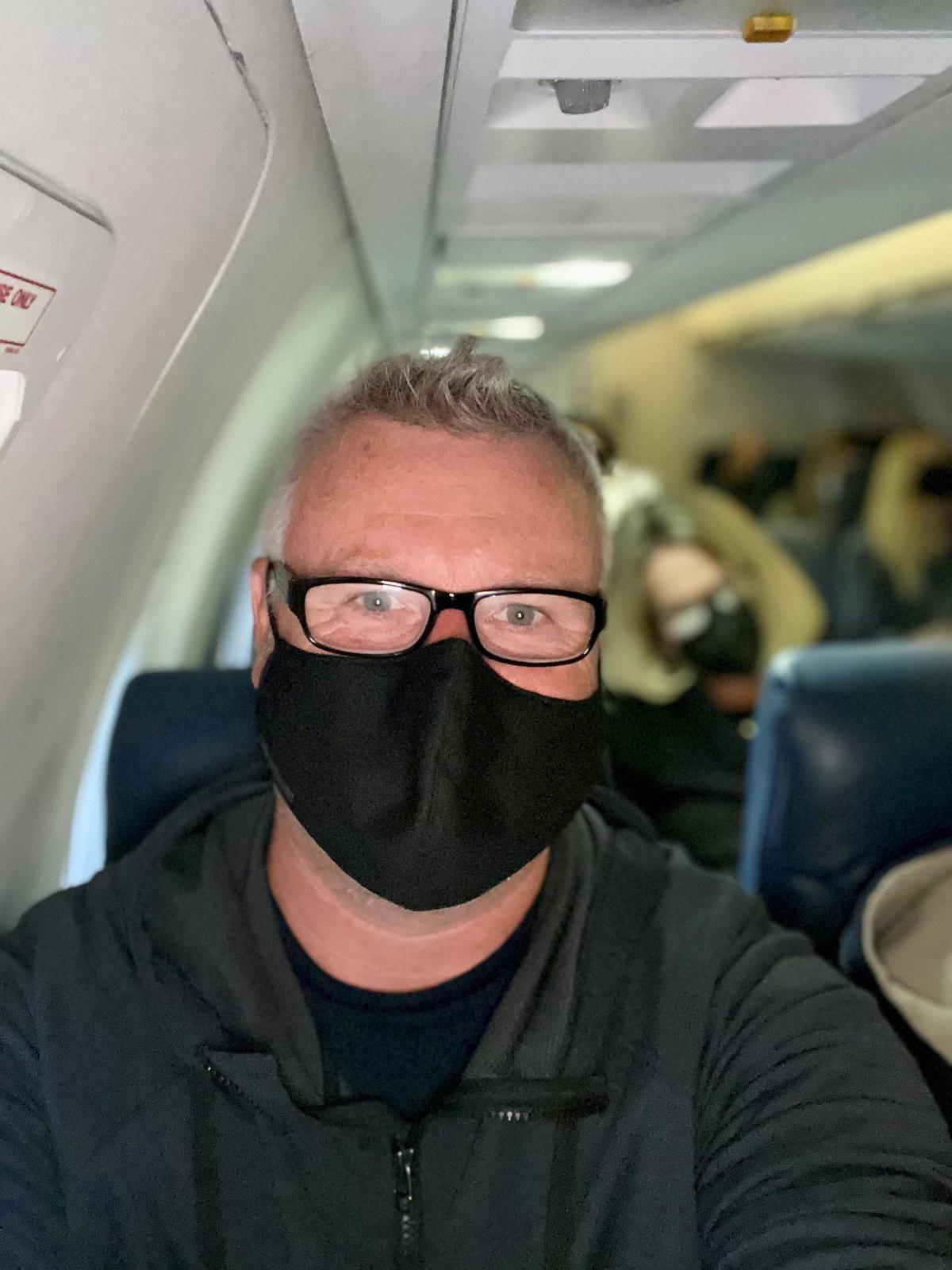DENVER — In seat 10D, my eyes flicker between my fellow passengers crammed into the aisle and the carbon dioxide detector balancing on my knee.
I can’t help but shudder a little every time someone coughs or sneezes as they board, and the numbers on the detector rise steadily, from about 800 parts per million to over 1,600 ppm.
Experts say indoor air carbon dioxide levels are an easy indicator of potential exposure to COIVD-19, and now that masks are voluntary on planes and no longer have to test international arrivals, I wanted to see what my potential risk was.
Outdoor air typically contains less than 400ppm of carbon dioxide, and while the CO2 levels on my plane never reach anything even considered mildly unhealthy, the numbers suggest I’m exposed to coronavirus. I can’t help but touch my mask for reassurance.
On board one of the last masked flights: This is how the crew and passengers discovered that masks were not necessary
International travel: US to remove COVID test requirement for international flyers Sunday

I am wearing a mask on this flight to visit my elderly parents in Vermont. The last time I was there I was on one of the last mandatory masked flights and since then I’ve taken several flights, some masked, some not.
Nationwide, about 300 people a day still die from COVID. Although rapid tests are now widely available, they only measure whether you are infected. There’s no way to know about the people around you — especially if a lot of people don’t seem to care whether they’re infected or not, or what the impact might be on my parents or other at-risk communities.
That’s where the CO2 detector comes in handy. I bought a $140 KOPUO tester from Amazon, which an expert later tells me is one of the cheapest but still accurate detectors. Cheaper ones use a different measurement system which can be inaccurate if a lot of hand sanitizer is used around it.
Why measure CO2?
An area with high CO2 levels may pose a higher risk of infection, while an area with low CO2 levels may be considered safer, says University of Colorado-Boulder professor Jose-Luis Jimenez.
Jimenez is a expert on how particles and gases moving around a room, and he has tested many inexpensive CO2 detectors and found that many are remarkably accurate when compared to lab-grade equipment.
“It’s the only thing we’ve found that approximates this information,” Jimenez said. “It’s not perfect because everyone exhales carbon dioxide, but not everyone who exhales has COVID.”
Jimenez and his colleagues found that in a library, if an influx of people doubles CO2 levels from 800 ppm to 1,600, the transmission risk of COVID triples. And if CO2 levels in a gym drop from 2,800 ppm to 1,000, the risk of transmitting COVID-19 drops by 75%.
There are, of course, caveats to his models, especially when it comes to masks, planes, and HEPA filters. HEPA stands for “high-efficiency particulate air” and most of the large aircraft from Boeing and Airbus have them installed. HEPA filters are effective at removing dust, pollen, bacteria and virus particles from the air, but they do not remove carbon dioxide because it is a dissolved gas with much smaller molecules.
Are filters enough to prevent COVID on airplanes?: Airlines say mask mandates are no longer necessary
Multiple studies conducted by the federal government, airlines, aircraft manufacturers and other researchers have concluded that air travel carries a relatively low risk of COIVD infection, largely because the HEPA filters remove virus particles. But that’s only relevant if the plane is pumping air through the filters. Airbus says its systems completely replace the air in the cabin every 2-3 minutes while flying.
Measuring CO2 levels during my flight, at the airport
My readings show that CO2 levels skyrocketed while boarding my Airbus A319 on the way to Vermont, but remained virtually unchanged during my flight back to Denver. That indicates that the pilot or ground crew were doing something different when boarding to keep the air fresher, even though both flights were equally full and I was almost in the same place in both directions.
United Airlines did not respond to a request for comment on its specific policy, but sent out a statement in which it said in part: “There is always fresh air on the plane. The primary HEPA benefits are when they are in the air, as there is a lot of outside air. circulating through the cabin and yet a jet bridge on the ground.”
In the Denver International Airport terminal, CO2 levels stayed relatively constant at about 800 ppm, and I felt comfortable taking off my mask to chase away some McDonald’s hash browns. Levels reached about 1,000 ppm on the airport train to the concourse, but sitting at the gate, I was actually more concerned about how few men washed their hands after using the restroom. That thought made me shudder too.
On board the plane, CO2 levels reached 1,520 ppm when flight attendants closed the boarding door, rose to about 1,800 when the pilot appeared to turn on another ventilation system, dropped to about 1,600 as we taxied to the runway, then jumped back to 1,900 as we approached the end of the runway to take off.
Levels immediately began to drop as the engines spooled up and then dropped around 1200 when the seat belt sign came off at 28,000 feet.
Watching the monitor, the levels rose again to 1,550 as the flight attendants (one masked, one not) handed out cookies and then stayed at about that level until we landed. After I got off the plane in Burlington, the CO2 level in the terminal was about 1,000, and I ended up removing it with a mask.
Risk assessment
When we returned home on Monday, the CO2 at the airport was about 400 ppm, the same level as outside. Burlington’s airport is much smaller than Denver’s, and fewer people wore masks, including me. The CO2 levels for the return flight peaked at about 1,000 ppm when the boarding door closed, and it dropped to about 850 on takeoff and stayed there until we landed in Denver.
On the train back from the concourse to the terminal, the CO2 level reached 650, significantly lower than my outbound ride. Given those lower levels, I felt reassured that it was a safe bet to take off my mask.
Jimenez said my behavior follows what’s known as a “risk budget” — using data, I’ve modified my answers. Jimenez said he still wears N-95 masks on planes and tries to eat beforehand if it’s a short flight, but otherwise he’ll have to take it off if he eats on board. He said wearing a CO2 detector has helped him make informed decisions about potential exposure to COVID.
“We’re all forced to do that,” he said of the constant decisions about risk. “We don’t want to live like monks.”
For me, the detector is an easy reassurance about my relative risks: indoor areas with high CO2 levels will prompt me to wear a mask, while areas with lower levels mean I can skip it.
In the future, the proof will be in the pudding, as my parents like to say. And in this case, it means another negative COVID-19 test result upon my return to Denver.
This article originally appeared on USA TODAY: COVID on Airplanes: What I Learned by Measuring CO2 Levels on My Flight

